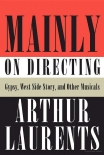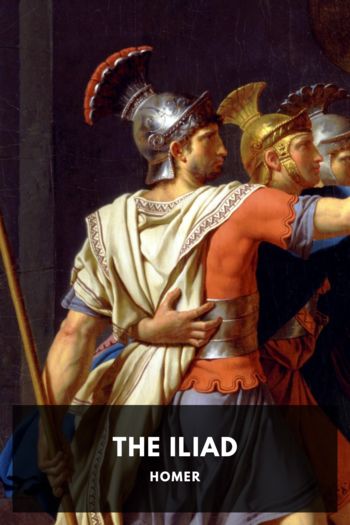Mainly on Directing, Arthur Laurents [best books for students to read TXT] 📗

- Author: Arthur Laurents
Book online «Mainly on Directing, Arthur Laurents [best books for students to read TXT] 📗». Author Arthur Laurents
The second curve was thrown by Marty Pakledinaz, and was a clean hit to the heart. On Gypsy, only Craig had been closer to me. During the time between City Center and the St. James Theatre, Marty and I had continued discussing the theatre we wanted to be part of and talked about West Side Story as that kind of theatre. However, Marty had an offer from another director he “loved” to do a quasi-new musical—“quasi” because the score was old Gershwin songs and the show was being star-tailored. The two shows were scheduled for the same rehearsal date. Marty chose the quasi. What I didn't understand and still don't was Martin Pakledinaz choosing that kind of theatre.
Before Tom's death, I would have been angry at Marty. Now I felt disappointed that the friendship was over. Too unforgiving? The loss of Tom has made me treasure the few true friends I am fortunate to have; admittedly, they are few. A friend cannot be replaced; a designer, even one as good as Marty, can be. His replacement was David Woolard, a man whose work I had never seen. Why did I choose him? Well, I knew of no other costume designer right for the job; I interviewed two or three and wasn't encouraged. But David was highly recommended by Jim Youmans and Howell Binkley of the Gypsy team, who had worked with him before and often. I knew Jim and Howell well, I trusted them, and they were choosing a designer they would have to work with. A team that likes working as a team is essential for a director.
When I met David, we connected almost from the moment he sat upright yet relaxed on my sofa. He's laid-back where Marty is always on the verge of something jittery. The decision was cinched when after I explained how I saw the production, David used one telling word to describe how he saw the costumes: dangerous. With, once again, Dan Moses Schreier, the best of sand designers, the West Side Story team was complete.
A DVD of a highly praised fiftieth-anniversary revival of West Side confirmed for me that the passage of time had made it even more of a minefield than I had thought ten years earlier when I directed it in London. Why? Because, an accurate replication of the original, it showed too clearly that the most difficult problems stemmed from portraying the Jets as likeable tough little thugs. This misconception was reflected in the opening Jet song, staged as a fifties musical-comedy number, and in “Gee, Officer Krupke,” a vaudeville comedy showstopper. The kids in gangs today are angry, vicious, and violent, heedless killers, but they were in the fifties, too. They haven't changed, the theatre has. Somehow, they would have to be played as what they are.
Then there was the second-act ballet. As beautiful as much of the dancing is, no matter how you slice it, the second-act ballet is still the second-act ballet. Lovely dancing with a generalized emotion or two in a self-conscious dreamworld. Half a century ago, it was part of the show; today, it has to be made part of the play. Not an easy task, but hopefully achievable if a very different approach is used. A challenge, all this, for me to communicate to Joey McNeely, who has been replicating Jerry's choreography for years all over Europe as well as here, and for him to execute with his assistant, the lovely Lori Werner. They are perfectly balanced: Joey is constantly fired up, ready to take off; Lori is his control tower.
The new approach was equally difficult and became more so each day for Patrick Vaccariello, the music conductor, who was totally tuned in to what I wanted played and sung differently in Gypsy and achieved it brilliantly. I can't envision doing a musical without Patrick. That music, however, was Jule Styne; this was Leonard Bernstein, much more complex and sacrosanct. The fine line that had to be walked with this new approach, erasing the fifties without violating what made West Side Story the classic it has become, was a new approach I explained at a production meeting of the whole team.
Production meetings are the most fertile ground for the ideas that transform a show. They can pop suddenly out of anyone's mouth to influence, shift, elevate the direction of the show. At one early meeting, I heard someone who turned out to be me explain a conception as though it were the result of much thought but in reality had just occurred to me that minute. Why? I have no idea, and since it's decades since I was in analysis, no therapist to help. West Side Story was about how love cannot survive in a world of bigotry and violence. It exists, then, in a world of its own—a Renaissance world, the world of Romeo and Juliet, the greatest love story ever told and retold. It wasn't necessary to relate all this; just the word “Renaissance” excited the room. Everyone got it and used it. The fire escape that Tony climbs to reach Maria became a baroque balcony that resembles a fire escape. The color of Tony and Maria's costumes reflects the Renaissance: a Della Robbia blue rather than a Jet or Shark color.
We had a three-hour production meeting on the subject of color. In the original production, and thus in almost every production since, the Sharks were in purple, red, and black, the Jets were in blue and yellow. Solid colors made the dance at the gym vividly theatrical in 1957. Today, that





Comments (0)